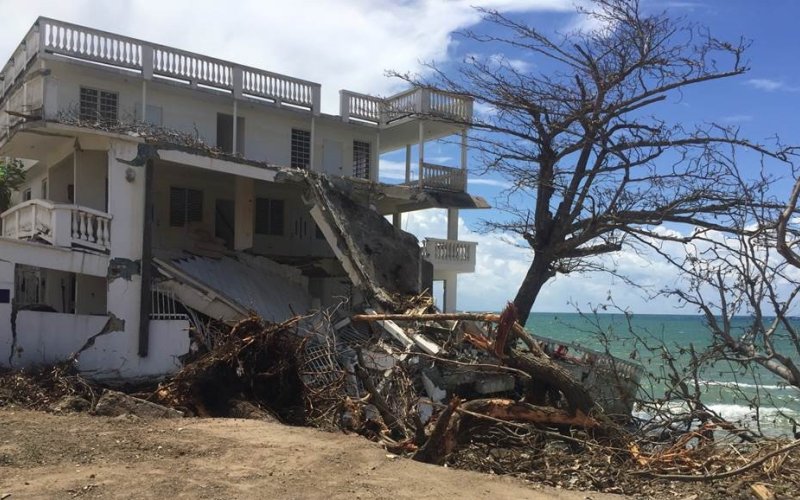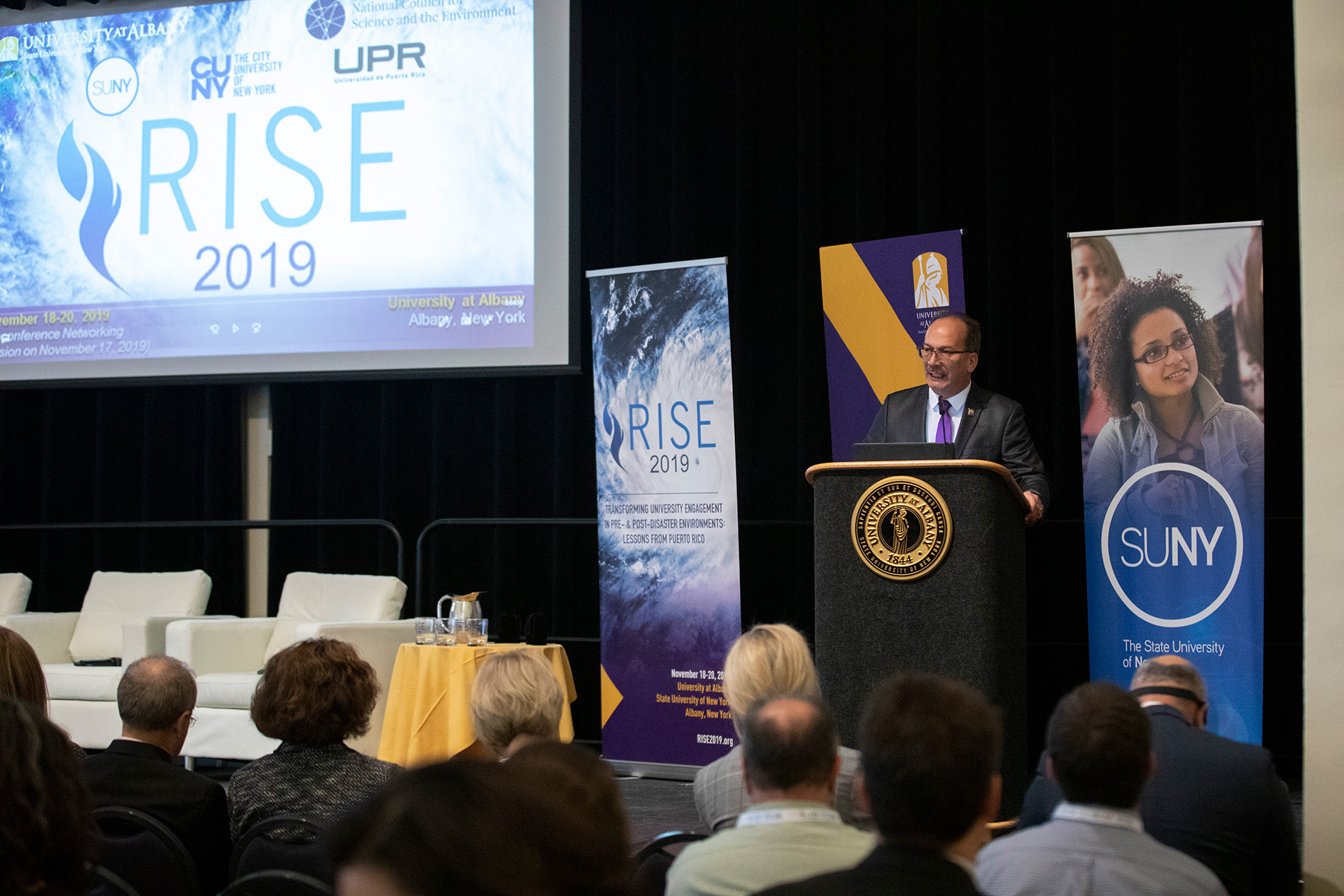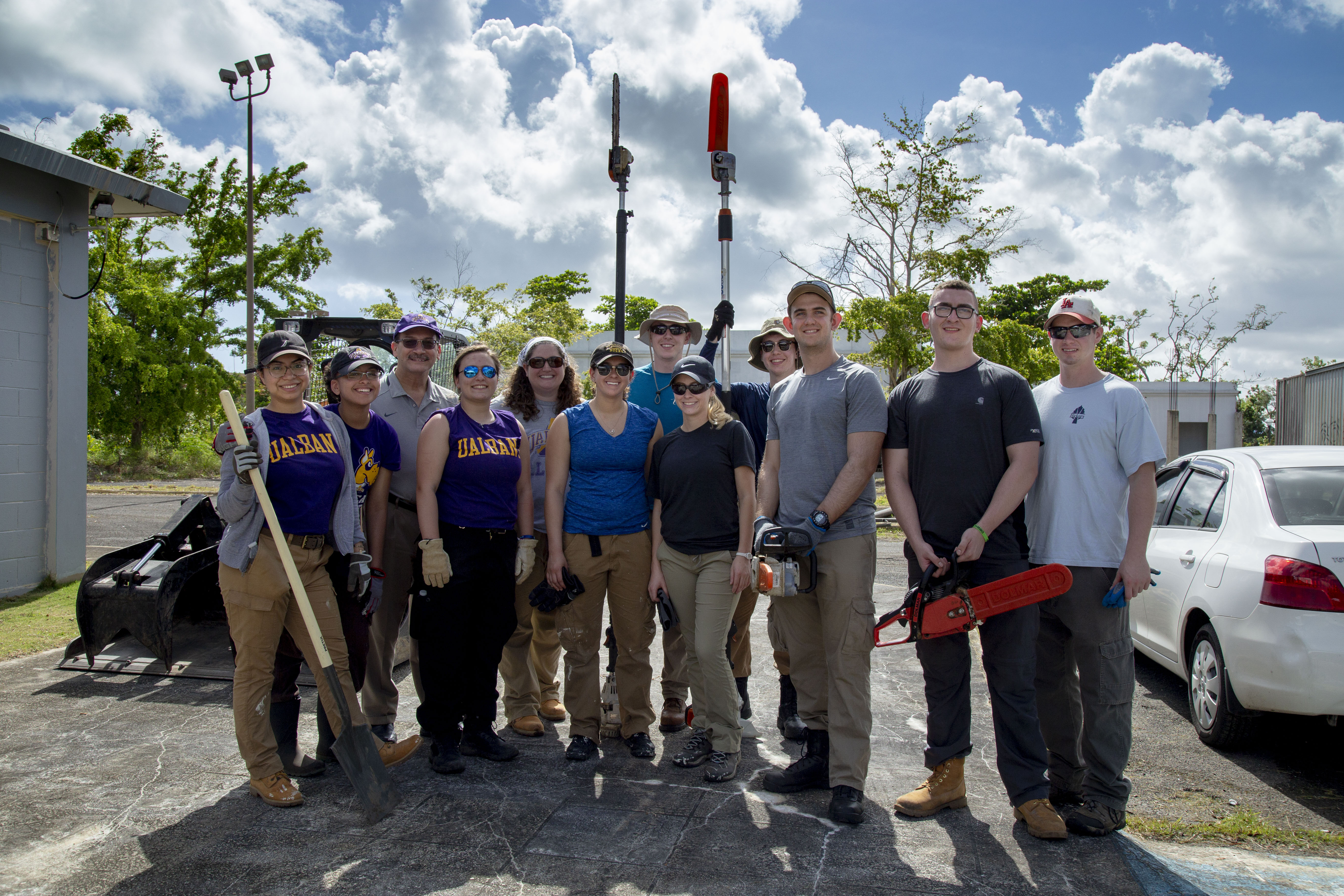Hurricane Fiona Tests Puerto Rico’s Resilience: A Q&A with President Rodríguez

ALBANY, N.Y. (Sept. 22, 2022) — On Sunday afternoon, Hurricane Fiona made landfall on Puerto Rico’s southwest coast as a Category 1 storm, unleashing strong winds, destructive flooding and knocking the island’s entire power grid offline.
As of Monday morning, more than 1.4 million customers — about 3 million people — had lost electricity due to a transmission grid failure. As of Wednesday afternoon, the storm had intensified to a Category 4 and was threatening Bermuda.
While power restoration on Puerto Rico has begun, Fiona’s arrival evoked painful comparisons to Hurricane Maria on the eve of the five-year anniversary this week of that much more powerful storm devastating the northeastern Caribbean, claiming nearly 3,000 lives in Puerto Rico alone and leaving much of the island’s infrastructure in ruin.
President Havidán Rodríguez is a native of Puerto Rico and a leading expert in disaster science, with a focus on the social science of disasters and their disproportionate impacts on underserved communities. As president, he co-led the SUNY system’s post-Maria relief efforts in Puerto Rico, and as a scholar he recently co-edited the book Hurricane Maria in Puerto Rico: Disaster, Vulnerability & Resiliency. In 2019, UAlbany hosted the RISE Conference in partnership with the National Council for Science and the Environment to discuss lessons learned in Puerto Rico from Hurricane Maria.

We caught up with President Rodríguez to discuss this week’s storm, what it tells us about post-Maria Puerto Rico and what communities can do to prepare themselves for the worst.
Five years after Hurricane Maria, Puerto Rico’s electrical grid remains extremely vulnerable. What are some of the major hurdles to building resiliency on the island?
One of the major hurdles in building resiliency now is that five years ago Hurricane Maria simply obliterated an already vulnerable and deteriorating electrical infrastructure in Puerto Rico. Hurricane Fiona tragically reminded us that the island’s electrical grid remains as vulnerable as ever with the entire island subsumed in a blackout. Trying to restore the electrical grid and bringing it back to its pre-Maria or pre-Fiona levels is simply preparing our communities for frequent and continuous blackouts across the island, which were quite prevalent in the years between Maria and Fiona. A focus on developing a robust, resilient, and sustainable electrical grid in Puerto Rico must be a critical priority for local and federal governments.
Some may be tempted to compare Fiona to Maria. Is that fair? From what you have seen so far, does the response to this storm look different from what we saw five years ago?
Maria was a Category 4 hurricane, and one of the most devastating and deadliest hurricanes the island had experienced in its history. Because Puerto Rico’s infrastructure was already so vulnerable, its economy was decimated by this storm. In addition, the federal response (or lack thereof) exacerbated the consequences and impacts of Hurricane Maria across the island. While Fiona was “only” a Category 1 Hurricane, its impacts are exacerbated by the devastation left by Maria. In other words, the effects are cumulative. Also, the recent and massive amounts of rain (in a very short period of time) led to widespread flooding and landslides across the island. One glimmer of hope is that President Biden declared a state of emergency in Puerto Rico prior to the impact of Hurricane Fiona. I am hopeful that this will lead to an efficient, transparent, and helpful response for the victims of Hurricane Fiona. That said, the people of Puerto Rico (and the Dominican Republic, among others) face a prolonged and very difficult recovery process.
We are marking the fifth anniversary of Maria as the horror of recent flooding in Pakistan is still unfolding. As extreme weather becomes more frequent due to climate change, what are the most important steps that communities – especially underserved communities – can take to build resiliency in the future?

There needs to be a holistic and multifaceted approach to building community resiliency to help our communities better prepare, respond, and recover from these events. There are critically important roles for individual communities, as well as local, state and national governments to play in this process. While education and raising awareness is key, building robust and sustainable infrastructure (e.g., electrical grid, communication, transportation, health care, etc.) is imperative. Moreover, these events did not create poverty, vulnerability or economic inequality on the island, but they certainly exacerbated and brought to the forefront the issues already impacting impoverished and underserved communities. Clearly, we must do better.
What role can higher education play in strengthening preparedness, response and recovery efforts?
Higher education can and should play a critical role in enhancing our understanding of disaster vulnerability, resiliency, mitigation, response, and recovery, and how to address these issues in order to mitigate the impacts of these events on communities across the world. For example, the State University of New York generally and UAlbany specifically played a very important role in disaster response and recovery efforts focused on New York Stands with Puerto Rico and SUNY stands with Puerto Rico. Also, our College of Emergency Preparedness, Homeland Security and Cybersecurity, as well as the Atmospheric Sciences Research Center and the Department of Atmospheric and Environmental Sciences in the College of Arts and Sciences, among others, have some of the best academic and research initiatives focused on atmospheric and environmental sciences, emergency preparedness, and disasters in the U.S. We can and are playing a lead role in addressing these critical issues, nationally and globally.
Beyond infrastructure, how do disasters like the 2004 Indian Ocean earthquake and tsunami, Hurricane Maria and the current flooding in Pakistan permanently change the places and people they impact?
The impacts of these events on our communities, especially underserved and poverty-stricken communities, are significant and long-standing. For example, fishing communities in India and communities throughout Puerto Rico are still recovering from the devastating impacts of the Indian Ocean Tsunami (2004) and Hurricane Maria (2017), respectively. Human suffering as a consequence of mortality, illness, destruction of property, and further impoverishment resulting from these events have ripple effects well into the future. Some countries’ economies have been destroyed. For example, it is estimated that Hurricane Mitch (1998) set back Honduras (which had high levels of poverty prior to Mitch) about 50 years in terms of its economic development. Also, extensive and extended blackouts resulting from these hazard events adversely impact the mental health of children, the elderly, and others — effects that have been documented by researchers at UAlbany, among others. Consequently, building a robust and resilient infrastructure and reducing vulnerability are of paramount importance in order to mitigate the impacts of these disasters on our communities. The resiliency that we celebrate among the people of Puerto Rico has been significantly challenged in the midst of Hurricane Maria, devastating earthquakes, and now Hurricane Fiona — not to mention a global pandemic — while also confronting ongoing and very serious social and economic challenges.




